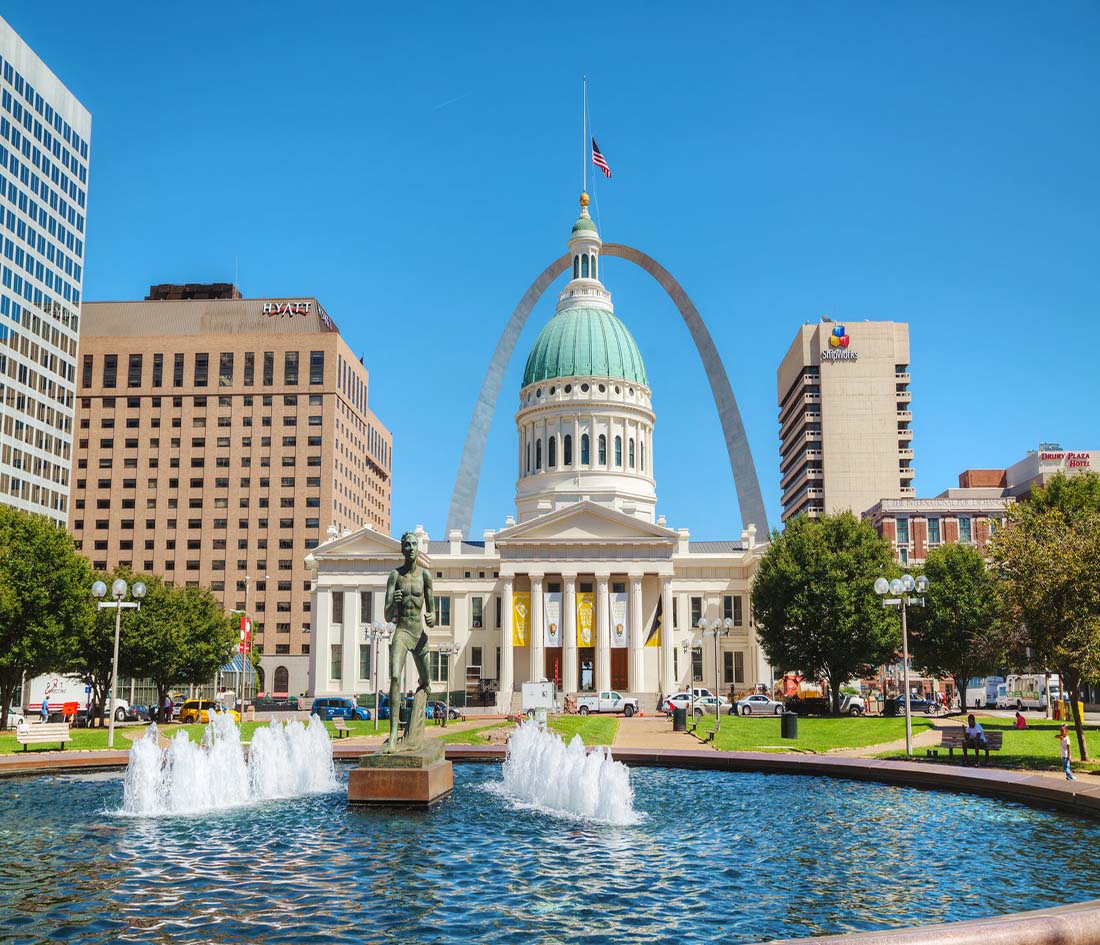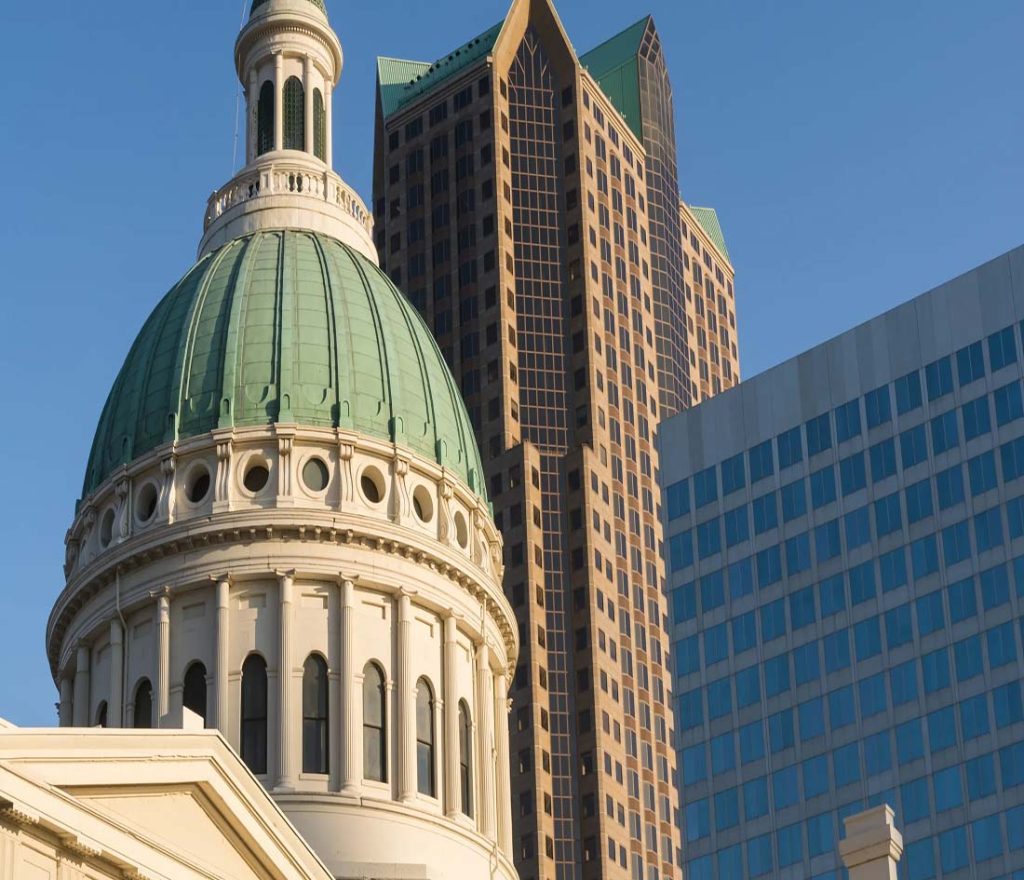
I embarked on a recent expedition to the enchanting city of St. Louis, Missouri. Known for its deep historical roots and impressive architectural gems, this city held the promise of a treasure trove of compelling narratives and impeccably preserved landmarks. I will impart my personal insights, derived from firsthand encounters with three noteworthy historical sites, and offer four additional suggestions for fellow history enthusiasts planning their odyssey through St. Louis. Be prepared for an in-depth exploration that touches upon services, merits, drawbacks, precise locations, travel routes, admission fees, discounts, my personal endorsements, and booking platforms. Let’s venture forth on this immersive historical journey through the heart of St. Louis.
A Close Encounter with the Gateway Arch

Location: Gateway Arch National Park, St. Louis, Missouri.
Route: Accessible by a short walk from downtown St. Louis, Gateway Arch National Park can be easily reached by car or public transport.
Admission: Tickets for adults range from $12 for a Tram Ride to the Top, $6 for a Museum-Only Ticket, to $16 for a combination of both.
Discounts: Seniors (62+) and children (3-15) benefit from discounted rates.
Booking Platform: Secure your tickets conveniently via the official Gateway Arch website.
My Personal Expedition:
My sojourn into St. Louis commenced with a visit to the globally renowned Gateway Arch, an iconic emblem of the city’s identity. Standing tall at an astounding height of 630 feet, this monument proudly holds the title of the world’s tallest arch. It pays homage to America’s westward expansion and the instrumental role that St. Louis played in this momentous historical episode.
The sheer enormity and grace of the Gateway Arch took my breath away as I arrived at Gateway Arch National Park. The polished stainless steel structure shimmered gloriously in the sunlight, its sleek and graceful curvature a testament to modern architectural prowess. After acquiring my admission ticket, I opted to begin with the Museum-Only experience.
The museum, nestled beneath the Arch, houses an extensive array of historical exhibits that offer a comprehensive narrative of westward expansion, Lewis and Clark’s celebrated expedition, and the diverse indigenous cultures that once thrived in the region. The interactive displays, lifelike dioramas, and multimedia presentations seamlessly breathed life into history. Notable highlights included replica covered wagons and a life-sized buffalo, which vividly conveyed the trials and tribulations faced by pioneers on their journey westward.
Eager to savor the unparalleled vistas offered by the Arch, I proceeded to embark on the tram ride to the pinnacle. These trams are feats of engineering, cleverly designed to fit snugly within the Arch’s graceful legs. As I ascended to the observation deck, I couldn’t help but be overwhelmed by the breathtaking panoramic views of St. Louis and the majestic Mississippi River. The Arch’s architectural design ensured unobstructed, sweeping vistas, bestowing upon me a unique perspective of the city.
The Gateway Arch’s visitor amenities are nothing short of impressive. Clean restroom facilities, a gift shop replete with souvenirs, and a charming café where you can relish a meal or refreshments against the backdrop of the Arch all add to the visitor experience. The park’s staff proved to be exceptionally knowledgeable and amicable, ever ready to field queries and furnish insights into the site’s history.
Advantages:
- The Gateway Arch stands as an iconic symbol of St. Louis, a veritable must-visit for history aficionados.
- The museum delivers an immersive and captivating account of westward expansion.
- The tram ride to the pinnacle presents awe-inspiring, panoramic views of St. Louis.
- Visitor amenities including clean facilities, a gift shop, and a cozy café.
Disadvantages:
- Claustrophobic individuals may find the tram ride snug.
- Admission fees can accumulate if opting for both the museum and tram ride.
- Peak tourist seasons may entail lines and waiting times.
Recommendation Index: 9/10
The Gateway Arch is an absolute historical gem and a testament to the westward expansion of the United States. With its engaging museum, tram ride, and spellbinding views, it comes highly recommended. It’s a superb way to delve into American history whilst marveling at a remarkable piece of architecture.
Exploring the Old Courthouse’s Historical Legacy

Location: Old Courthouse, 11 N 4th St, St. Louis, Missouri.
Route: The Old Courthouse lies within downtown St. Louis, accessible via car or public transport.
Admission: Entry to the Old Courthouse is free of charge.
Discounts: No additional discounts are applicable beyond the free entry.
Booking Platform: Admission is readily obtained at the entrance, with no need for advanced booking.
My Personal Expedition:
My second historic sojourn in St. Louis brought me to the Old Courthouse, a site of profound architectural significance and rich historical legacy. This courthouse played a pivotal role in the struggle for freedom and civil rights in the United States, notably serving as the stage for the Dred Scott case.
Upon crossing the threshold of the courthouse, I was instantly enthralled by the grandeur of its architectural design. The Old Courthouse stands as a splendid specimen of Greek Revival architecture, replete with towering columns, a majestic dome, and intricate interior embellishments. The stained glass windows and the ornate courtroom were particular sources of fascination. It’s patently evident that the courthouse has been meticulously preserved to retain its original charm.
The museum housed within the courthouse provides a comprehensive history of the Dred Scott case and its profound significance in the battle against slavery. Exhibits comprise historical documents, artifacts, and interactive displays that deftly elucidate the intricate legal facets of the case. The courtroom in which the case was tried proved to be a somber and reflective space.
One of the standout experiences at the Old Courthouse is the opportunity to ascend to the summit of the dome, from which one can savor panoramic views of the city. The ascent is not for the faint-hearted, involving narrow spiral staircases and steep steps, but the view from the pinnacle amply rewards the effort invested. It delivers a unique perspective of downtown St. Louis and its environs.
While the Old Courthouse does not offer on-site dining establishments, there are dining options aplenty in downtown St. Louis. The staff at the Old Courthouse are affable and knowledgeable, always on hand to furnish information about the site’s history and answer any queries.
Advantages:
- The Old Courthouse stands as an exemplary specimen of Greek Revival architecture.
- It offers a profound lesson in the Dred Scott case and its role in American civil rights.
- The opportunity to climb to the dome’s zenith for panoramic views is a one-of-a-kind experience.
- Free entry renders it accessible to all visitors.
Disadvantages:
- The site’s focus centers primarily on a specific historical event, possibly limiting its appeal to those seeking a broader historical perspective.
- The ascent to the dome’s summit may prove physically taxing for certain visitors.
- On-site dining options are limited.
Recommendation Index: 7/10
The Old Courthouse stands as a must-visit for individuals intrigued by American civil rights history
and enamored by Greek Revival architecture. While its scope is somewhat narrow, it proffers a unique and enlightening experience, offering a commendable opportunity to grasp a pivotal juncture in American history.
Embarking on a Journey through the Missouri History Museum
Location: Missouri History Museum, 5700 Lindell Blvd, St. Louis, Missouri.
Route: Situated in Forest Park, the museum is effortlessly reachable by car or public transportation.
Admission: Most special exhibitions and the museum itself are open to the public free of charge.
Discounts: No additional discounts are available beyond the gratis entry.
Booking Platform: No advanced booking is necessary for entry.
My Personal Expedition:
My next historical sojourn led me to the Missouri History Museum, nestled in the picturesque environs of St. Louis’ Forest Park. This museum, distinguished by its arresting architecture and an extensive array of exhibits, promised to be a trove of knowledge pertaining to Missouri’s history and the broader United States.
The museum’s exterior represents an architectural marvel, replete with classical elements and a grand staircase that leads to the entrance. The building in and of itself serves as an emblematic representation of the historical narratives that it preserves within its walls. The exhibits are thoughtfully organized, offering a chronological exploration of Missouri’s history, spanning from its indigenous peoples and early settlers to its role in westward expansion and the Civil War.
The “Seeking St. Louis” exhibit held particular charm for me, offering a riveting presentation of the city’s growth and evolution throughout the centuries. Interactive displays, maps, and artifacts coalesced to offer a comprehensive understanding of the city’s development. This exhibit is an invaluable resource for those enamored by urban history and the transformation of American cities.
The museum’s special exhibitions encompass a dynamic spectrum of topics, including art, culture, and social justice issues. During my visit, I had the privilege of perusing a photography exhibit that showcased the work of local artists and their perspectives on contemporary social issues. The museum’s commitment to engaging with current events and issues was particularly commendable.
The Missouri History Museum also plays host to events, lectures, and programs that provide additional context and insights into the region’s history. These events not only enhance your visit but also provide a deeper comprehension of the historical narratives showcased in the exhibits.
The museum’s staff is gracious and approachable, always ready to assist with queries and provide guidance on the exhibits. The on-site museum store offers a selection of history books, unique gifts, and local crafts. Though the museum lacks a full-service restaurant, it does house a café where you can enjoy a quick meal or savor a cup of coffee.
Advantages:
- Free entry and access to most special exhibitions render it an affordable and accessible destination.
- Comprehensive exhibits that encompass the history of Missouri and the broader region.
- Prudently organized exhibits and interactive displays.
- A commitment to addressing contemporary social issues through exhibitions and events.
Disadvantages:
- Limited on-site dining options.
- The museum’s primary focus is on Missouri’s history, which might not captivate those seeking a broader perspective on American history.
Recommendation Index: 8/10
The Missouri History Museum stands as an exceptional destination for individuals intrigued by the history of Missouri and its distinctive position in American history. Its free entry and well-structured exhibits render it an accessible and informative experience.
Additional Recommendations for History Enthusiasts
1.Jefferson Barracks Historic Park
Location: 533 Grant Rd, St. Louis, Missouri.
Route: Jefferson Barracks is located in south St. Louis County and can be conveniently reached by car.
Admission: Entry to the park is free, though specific events may entail fees.
Discounts: No specific discounts beyond free entry.
Booking Platform: Entry is straightforwardly acquired on-site.
Description:
Jefferson Barracks Historic Park houses an extensive assortment of military history, including the Missouri Civil War Museum, which offers a comprehensive glimpse into the Civil War’s impact on the region. The park additionally boasts well-preserved historic edifices, cemeteries, and scenic grounds that are ideal for picnics and leisurely strolls. This destination is a treasure trove for those intrigued by military history and the Civil War.
Advantages:
- Gratis entry and an array of historical sites to explore.
- Comprehensive museum exhibits centered on the Civil War.
- Beautiful grounds for relaxation and exploration.
Disadvantages:
- Dining options on-site are limited.
Recommendation Index: 7/10
2.Cahokia Mounds State Historic Site
Location: 30 Ramey St, Collinsville, Illinois (just across the river from St. Louis).
Route: Easily accessible by car from St. Louis or via public transportation.
Admission: Adult tickets are priced at $7, with discounts for seniors and children.
Discounts: Seniors (62+) and children (6-11) receive discounted rates.
Booking Platform: Tickets can be procured on-site.
Description:
Cahokia Mounds is designated as a UNESCO World Heritage Site and was once the site of the largest pre-Columbian city north of Mexico. The site encompasses the remnants of earthen mounds constructed by indigenous peoples more than a millennium ago. It presents a unique opportunity to delve into Native American history and their intricate civilizations.
Advantages:
- A distinctive occasion to explore the history of indigenous peoples in the region.
- Well-preserved earthen mounds and informative exhibits.
- Accessible admission prices.
Disadvantages:
- On-site dining options are limited.
Recommendation Index: 8/10
3.The Eugene Field House & St. Louis Toy Museum
Location: 634 S Broadway, St. Louis, Missouri.
Route: Located in downtown St. Louis, this museum is easily reachable by car or public transportation.
Admission: Adult tickets are priced at $8, with discounts for seniors and children.
Discounts: Seniors (65+) and children (4-12) benefit from discounted rates.
Booking Platform: Tickets can be procured on-site.
Description:
The Eugene Field House was the childhood home of Eugene Field, a cherished American poet and journalist. The museum offers a glimpse into life during the 19th century and is also home to a Toy Museum housing a remarkable collection of vintage toys. It’s a delightful and educational destination for individuals passionate about American literature, history, and antique toys.
Advantages:
- A distinctive fusion of literary history and toy memorabilia.
- Informative and enjoyable for visitors of all ages.
- Reasonably priced admission.
Disadvantages:
- On-site dining options are limited.
- Recommendation Index: 7/10
St. Louis, Missouri, unfurls as an opulent treasure chest for history enthusiasts, boasting a diverse array of attractions that cater to various facets of American history. From the iconic Gateway Arch to the reflective Old Courthouse and the expansive Missouri History Museum, the city offers an array of opportunities to embark on a voyage into the past. Additionally, the recommended sites, including Jefferson Barracks, Cahokia Mounds, and the Eugene Field House, present distinctive and enriching historical experiences. Whether one’s interests gravitate towards architectural wonders, civil rights, urban development, military history, indigenous cultures, or literary legacies, St. Louis extends a generous welcome, with historical treasures awaiting exploration.
My personal journey through these historical sites in St. Louis was not merely educational but also deeply moving. It underscored the importance of preserving and sharing our history and heritage. The city’s dedication to maintaining these historical sites and making them accessible to the public is laudable. Therefore, if you’re contemplating a historical adventure, I wholeheartedly extend my recommendation for St. Louis as your next destination. Its historical gems beckon to be unearthed, and each visit becomes a portal to bygone eras, unveiling the captivating narratives that have sculpted our nation’s identity.





